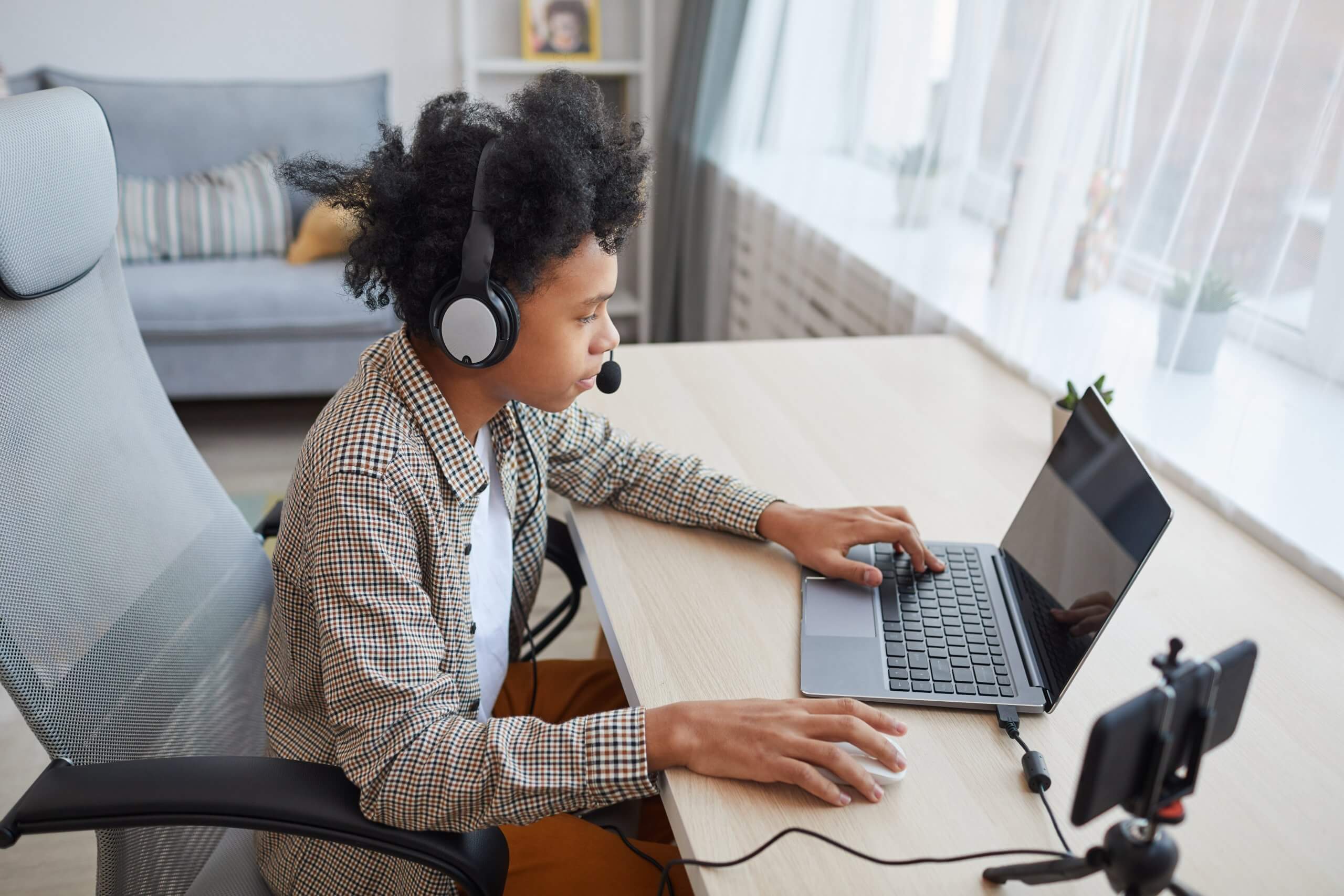November 25, 2025
How to Handle Screen Time with Your Child with Autism
FEATURED POSTS
September 25, 2025
by Brittany Barger, M.Ed., BCBA
Behavior Consultant, Autism Spectrum Therapies
Summer can mean outdoor activities and family vacations, but it can also mean more time spent at home, with parents and caregivers scrambling to come up with a kid-friendly daily agenda, while managing work, running errands, and tending to countless other priorities. It should come as no surprise, then, that screen time is an easy “go-to” activity for families.
If you, like many parents, find your child spending more time in front of a screen than you would like, you probably ask yourself: Will too much screen time be harmful? How can I limit my child’s time on screens?
While research indicates some potential negative side effects for children who have prolonged exposure to screens,1 let’s be real: in the 21st century, it is nearly impossible to eliminate screens entirely. Still, it’s important to know that young children who spend more than two hours a day in front of screens may face an increased risk for developmental delays in language acquisition and communication skills,1 and that violent and fast-paced content and overall screen time are linked to ADHD-related behavior.2
To parents of children with autism, this knowledge can feel daunting, considering that kids with autism spectrum disorder (ASD) can have delays in communication and language acquisition, along with deficits in attention. But let’s not forget the tremendous influence we have on our children—and the many tools we can equip them with to manage their own exposure and create healthy habits around screen time. These self-management strategies can help immensely as they grow up and transition to adulthood.
How, exactly, can you foster healthy screen-time practices in your child with ASD? Here, I share four tips that I use in my own home with my son and in my clinical practice:
Create structure and routine
Home is often a less structured environment than school, so screen time can be a “filler” activity when a child doesn’t have anything to do. An easy way to reduce time on screens is to plan out what the day will look like with your child. As you plan, involve your child in the process as much as possible. And know that failing to plan is often a plan to fail—especially for kids with autism, who tend to rely on structure and routines to help them navigate the day.
To establish natural boundaries around screen time, designate time that your child will have access to their devices. This will help your child understand your expectations—and what they need to do before they can access to their electronics. For instance, you might say, “First you need to eat breakfast and shower. Then you can watch 30 minutes of television.”

Modify the environment
Modifying your child’s environment is another easy way to reduce access to screen time. Removing computers, televisions, and tablets from bedrooms—and making devices available only in common spaces—allows you to monitor your child’s screen time more easily. Holding batteries, chargers, and power cords in a separate location that must be accessed by an adult is another way to limit or monitor exposure. These steps also encourage social interaction, given that your child must interact with you to access their electronics.
Keep in mind, too, that some devices allow you to set time limits, so that after a specified amount of time, the device will restrict access or lock particular screens. This sort of intentional planning will go a long way in creating an environment that sets up your child—and family—for success.
Re-cycle
By this, I don’t mean tossing your devices into your recycling bin, as tempting as that may feel. What I mean is taking toys, activities, video games, DVDs, or any tangible items that your child interacts with—and “cycling” through them time and again.
For example, we store many of our son’s items in boxes and typically leave out only one or two of the boxes, while putting the others away. When he starts to lose interest with the current items, we pack them up and replace them with some of the stored boxes. How does this help?
Restricting access to his old toys makes the items more interesting, given that he hasn’t played with them in a while. Likewise, it prevents us from spending money on new items, saving us money in the long-run, while making the “new” items a good distraction from screens. In this scenario, everyone wins.

Encourage self-monitoring
Lastly, and perhaps most importantly, long-term success with screen-time consumption depends largely on your child’s ability to monitor and adjust their own behavior. Each child requires varying degrees of support to self-monitor based on their development, but helping to bring awareness around “how much and what kind of consumption is healthy?” will empower your child to start. What can you do?
While implementing a true self-management protocol should be done under the supervision of a board-certified behavior analyst (BCBA), you can do some simple things to encourage your child’s self-management skills. Start by setting clear expectations around what kind of content is acceptable in your home. If appropriate for your child’s age and development, discuss why certain content is acceptable, while other content is not. Parent controls such as the ESRB game ratings and the Motion Picture Association’s film rating system can help you and your child make informed decisions—and can kickstart discussions on acceptable content. In addition, Common Sense Media publishes reviews of movies, TV shows, apps, games, and even distance learning programs. Written by parents and caregivers themselves, these reviews are incredibly helpful in figuring out appropriate versus inappropriate content—and in generating interesting discussions among families.
While these four steps are not exhaustive, they’re a simple starting point for encouraging “screen-time success” in your home and with your family. If your child receives applied behavior analysis (ABA) services, discuss these strategies with your clinical team so they can help you effectively implement any changes in your child’s treatment plan. Most importantly, don’t be afraid to try out different strategies—and see what works best for you and your child.
For non-screen alternatives to summer fun, read “How to Keep Your Child with Autism Engaged this Summer.”
References







